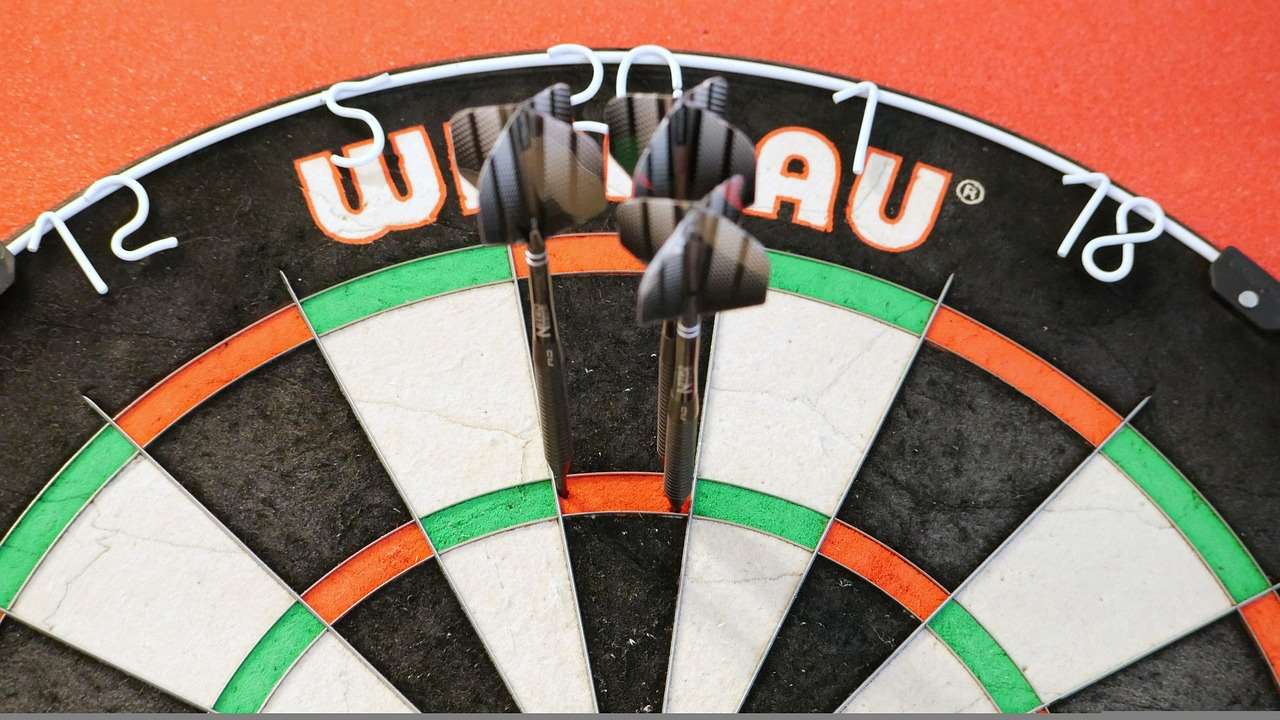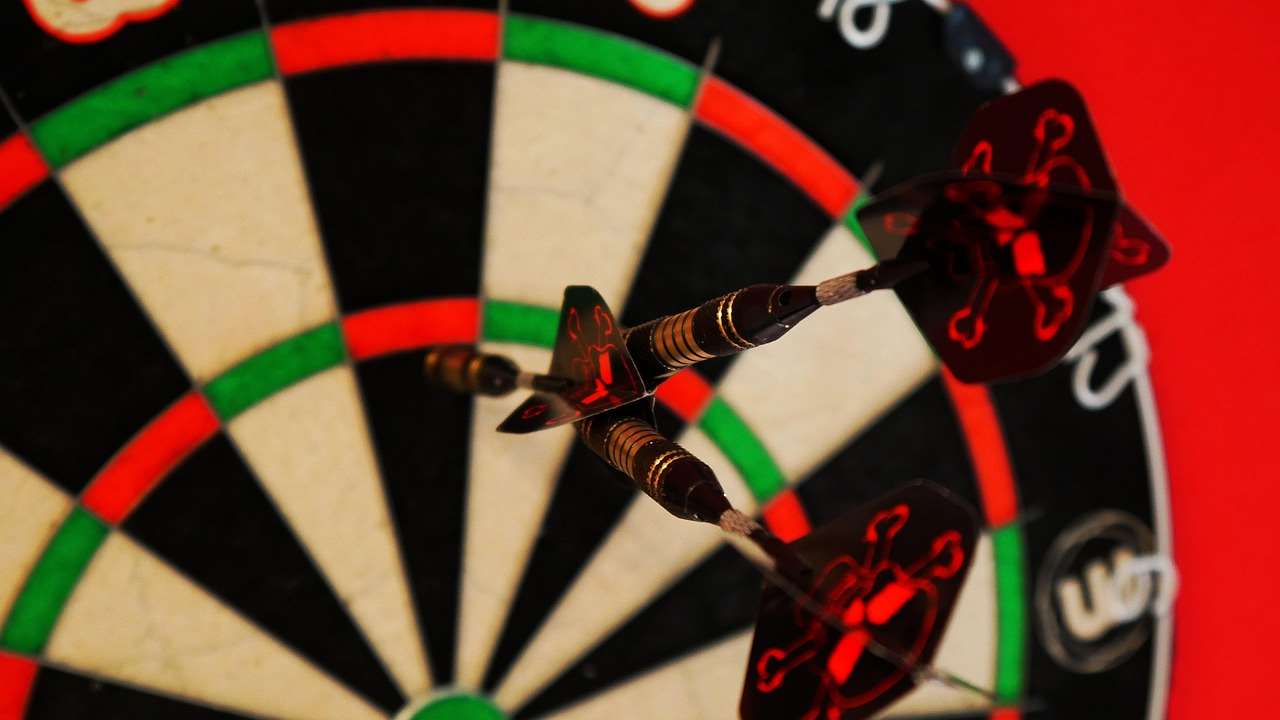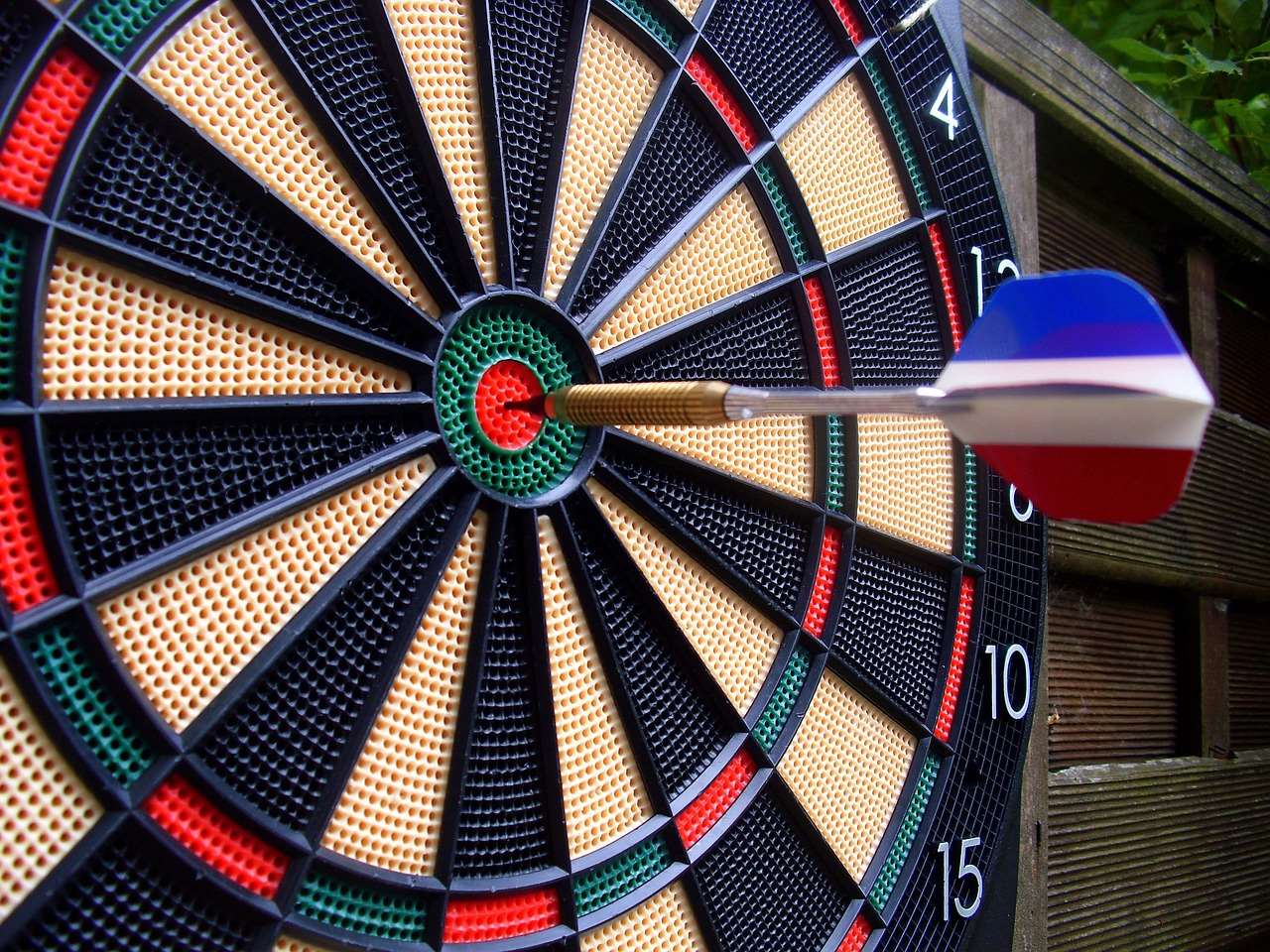Understanding how dartboard wear affects effective scoring dimensions is crucial for improving your game and maintaining fair play; as the board ages, the segments soften, potentially leading to inaccurate scores and increased bounce-outs. This article explores the factors contributing to dartboard wear, its impact on scoring, and strategies for minimizing its effects to ensure a consistent and enjoyable darts experience.
⚠️ Still Using Pen & Paper (or a Chalkboard)?! ⚠️
Step into the future! The Dart Counter App handles all the scoring, suggests checkouts, and tracks your stats automatically. It's easier than you think!
Try the Smart Dart Counter App FREE!Ready for an upgrade? Click above!
Understanding Dartboard Wear and Its Impact on Scoring
Over time, every dartboard experiences wear and tear. The constant impact of darts compresses the sisal fibers, leading to softer segments and wider holes. This wear significantly impacts the effective scoring dimensions, making it easier for darts to stick in certain areas and harder in others. Neglecting this issue can lead to frustration and an unfair playing field. One of the most crucial Basic Darts Fundamentals for Beginners is understanding the equipment you are using.

Factors Contributing to Dartboard Wear
Several factors contribute to the rate at which a dartboard deteriorates:
- Frequency of Play: The more often you play, the faster the board will wear down. Regular practice sessions will inevitably lead to more wear than occasional games.
- Dart Weight and Tip Sharpness: Heavier darts and excessively sharp tips can exacerbate wear by causing deeper penetrations and more fiber damage.
- Dartboard Quality: Higher-quality dartboards made from denser sisal will generally last longer and withstand more wear than cheaper alternatives.
- Environmental Conditions: Humidity and temperature fluctuations can affect the sisal fibers, causing them to expand and contract, leading to warping and premature wear.
- Rotation Frequency: Many players don’t rotate their dartboard, which leads to concentrated wear in popular scoring areas.
How Dartboard Wear Affects Effective Scoring Dimensions: A Detailed Look
How dartboard wear affects effective scoring dimensions is multifaceted. The most noticeable effect is the softening of frequently hit segments, such as the 20s, 19s, and bulls-eye. This softening creates several issues:
- Increased Bounce-outs: Softened segments offer less resistance, increasing the likelihood of bounce-outs, especially with less accurate throws.
- Wider Holes: Repeated dart impacts create larger holes, making it easier for subsequent darts to find those holes, potentially skewing scoring.
- Segment Distortion: The constant compression of sisal fibers can distort the shape of the segments, making it difficult to accurately target specific areas. The scoring surface is no longer uniform.
- Wire Looseness: As the sisal wears, the wires separating the segments can become loose, leading to inaccurate scoring if darts hit the wires.
These factors combine to change the effective scoring dimensions, creating an uneven playing field where some areas are easier to score on than others.

Specific Examples of Scoring Dimension Changes
Consider these specific examples:
- The 20s Segment: As the 20s segment wears, it becomes softer and develops more prominent holes. This makes it easier to hit the 20, even with slightly off-target throws.
- The Bulls-eye: The bulls-eye, a common target, is particularly susceptible to wear. A worn bulls-eye can become significantly easier to hit, potentially inflating scores.
- Treble and Double Rings: Wear around the treble and double rings can make these scoring zones less defined, increasing the chance of darts bouncing out or landing in adjacent segments.
Strategies to Minimize Dartboard Wear and Maintain Accurate Scoring
While wear is inevitable, there are several strategies you can employ to minimize its effects and maintain accurate scoring dimensions for as long as possible:
- Regular Rotation: Rotate your dartboard regularly to distribute wear evenly across all segments. A simple rotation chart can help you keep track of when to rotate.
- Use Darts with Rounded Tips: Darts with slightly rounded tips are less likely to damage the sisal fibers than those with excessively sharp points.
- Maintain Dart Tip Sharpness: While rounded tips are preferable, dull dart tips can also cause problems. Dull tips require more force to penetrate the board, which can damage the fibers. Use a dart sharpener to keep your tips in good condition but avoid over-sharpening.
- Control Environmental Conditions: Keep your dartboard in a room with stable humidity and temperature to prevent warping and premature wear.
- Invest in a High-Quality Dartboard: A high-quality dartboard made from denser sisal will last longer and withstand more wear than a cheaper alternative. Look for dartboards with a reputation for durability and longevity.
- Use a Backboard: A backboard protects the wall surrounding your dartboard from stray darts, but it can also slightly reduce the impact force on the board itself, potentially slowing down wear.

The Importance of Regular Dartboard Maintenance
Regular maintenance is key to extending the life of your dartboard and maintaining accurate scoring dimensions. This includes:
- Cleaning: Periodically clean your dartboard with a soft brush to remove dust and debris.
- Compression: Some players recommend compressing the sisal fibers with a specialized tool to help close up holes and restore the board’s density. However, be careful not to over-compress the fibers, as this can damage the board.
- Inspection: Regularly inspect your dartboard for signs of wear, such as softened segments, loose wires, and distorted shapes. Address any issues promptly to prevent further damage.
Recognizing When It’s Time to Replace Your Dartboard
Despite your best efforts, dartboard wear is inevitable. Eventually, the board will reach a point where it can no longer provide accurate scoring. Here are some signs that it’s time to replace your dartboard:
- Excessive Bounce-outs: If you’re experiencing a significantly higher number of bounce-outs than usual, it’s a sign that the segments have become too soft.
- Large, Unrepairable Holes: If the holes in the board are so large that they can’t be effectively compressed, it’s time for a replacement.
- Loose Wires: If the wires separating the segments are consistently loose, despite attempts to tighten them, it’s a sign that the sisal fibers have deteriorated.
- Distorted Shape: If the dartboard has become significantly distorted, it’s no longer suitable for accurate scoring.
- Uneven Scoring: If certain segments are consistently easier to score on than others, despite rotating the board, it’s a sign that the effective scoring dimensions have been compromised.
Remember that a worn dartboard not only affects your own game but can also impact the fairness of matches with others. Therefore, replacing your dartboard when necessary is essential for maintaining a consistent and enjoyable darts experience. You can find more information about Fun dart game variations with modified rules online.

Choosing a Replacement Dartboard
When selecting a replacement dartboard, consider the following factors:
- Material: Opt for a high-quality sisal dartboard with a reputation for durability.
- Construction: Look for a dartboard with tightly packed sisal fibers and well-secured wires.
- Brand: Choose a reputable brand known for producing high-quality dartboards.
- Price: While you don’t necessarily need to spend a fortune, investing in a higher-priced dartboard can often result in better durability and longevity.
Beyond Wear: Other Factors Affecting Scoring Accuracy
While dartboard wear is a major factor, it’s important to remember that other elements can also influence scoring accuracy. These include:
- Dart Quality: Using high-quality darts with consistent weight and balance can improve your accuracy.
- Throwing Technique: Proper throwing technique is essential for consistent dart placement.
- Lighting: Adequate lighting is crucial for clear visibility of the target.
- Distance: Maintaining the correct throwing distance is essential for accuracy.
- Mental Focus: Mental focus and concentration can significantly impact your performance.
Consider exploring Alternative darts rules for home play to add variety and challenge.

Understanding these factors and addressing them proactively can help you maximize your scoring potential and enjoy a more rewarding darts experience. Consider how using Adapting darts rules for small spaces: tips and tricks can affect your environment.
Conclusion: Maintaining Fair Play Through Dartboard Management
How dartboard wear affects effective scoring dimensions is a critical consideration for any darts player. By understanding the factors contributing to wear, implementing strategies to minimize its effects, and recognizing when it’s time for a replacement, you can ensure a consistent and fair playing field. Remember to rotate your board regularly, use appropriate darts, and maintain your equipment to extend its lifespan. Ultimately, taking care of your dartboard is an investment in your game and the enjoyment of those you play with. Take action today to assess the condition of your dartboard and implement the tips outlined in this article. Your scores (and your opponents) will thank you!
Hi, I’m Dieter, and I created Dartcounter (Dartcounterapp.com). My motivation wasn’t being a darts expert – quite the opposite! When I first started playing, I loved the game but found keeping accurate scores and tracking stats difficult and distracting.
I figured I couldn’t be the only one struggling with this. So, I decided to build a solution: an easy-to-use application that everyone, no matter their experience level, could use to manage scoring effortlessly.
My goal for Dartcounter was simple: let the app handle the numbers – the scoring, the averages, the stats, even checkout suggestions – so players could focus purely on their throw and enjoying the game. It began as a way to solve my own beginner’s problem, and I’m thrilled it has grown into a helpful tool for the wider darts community.